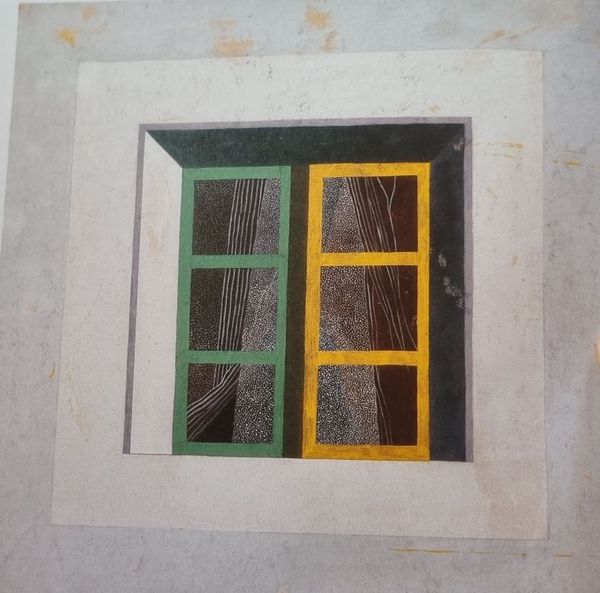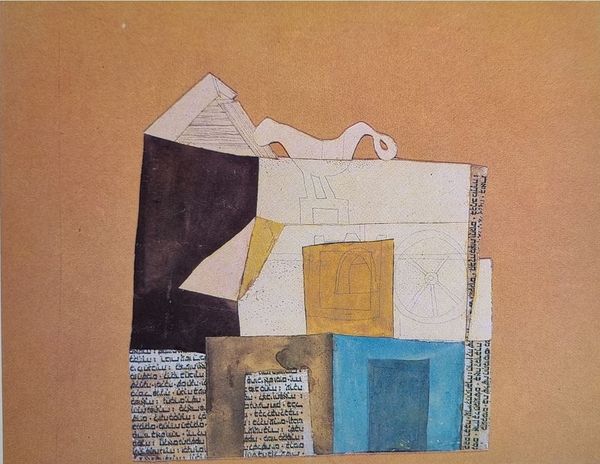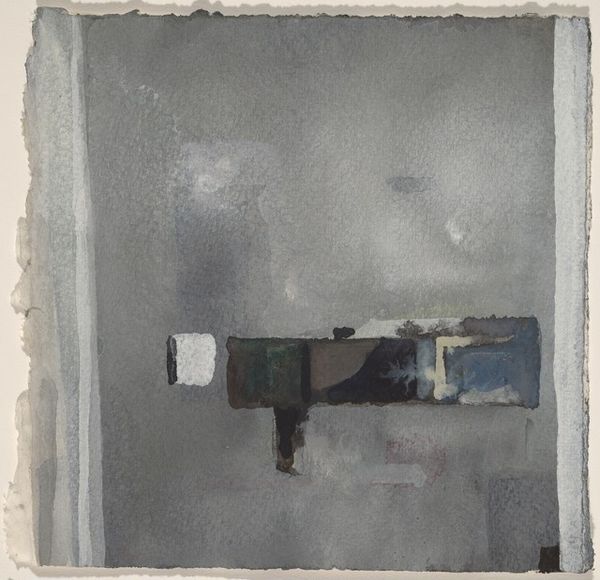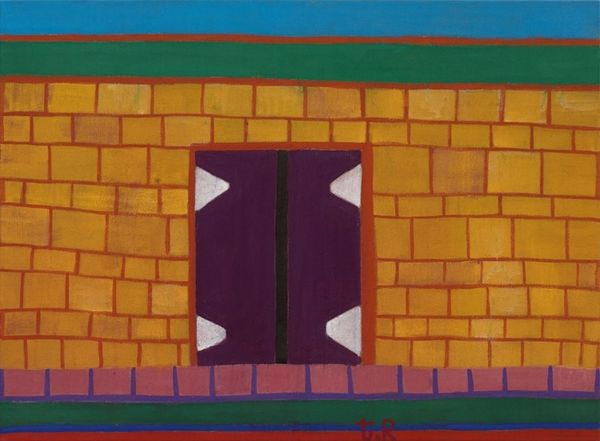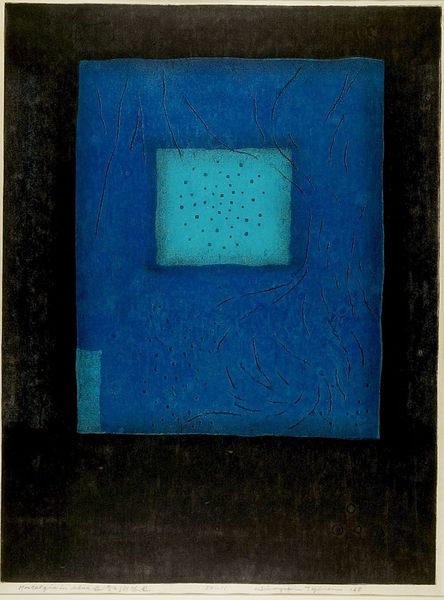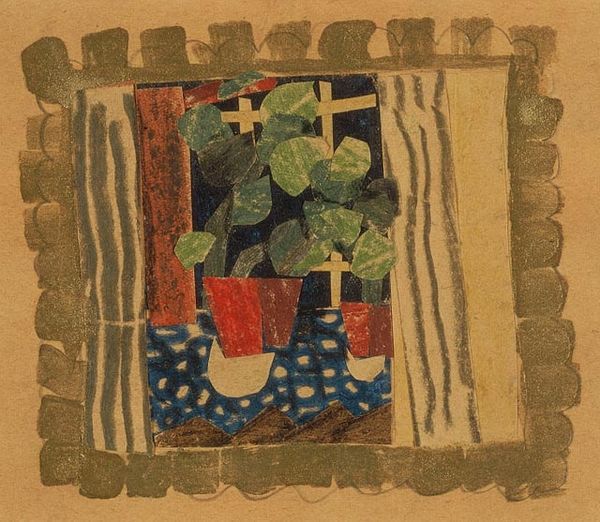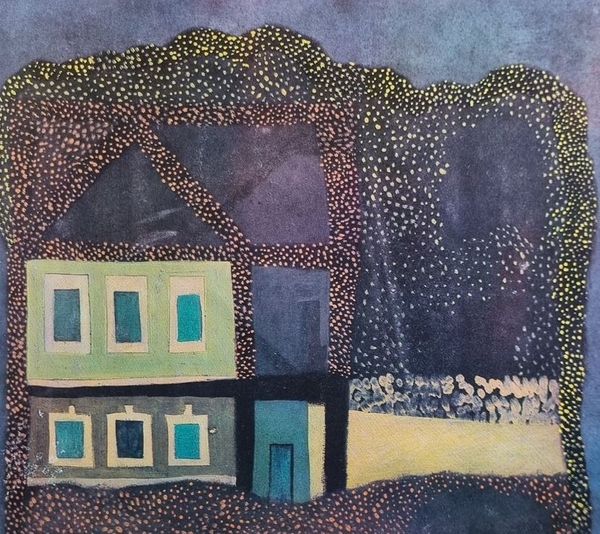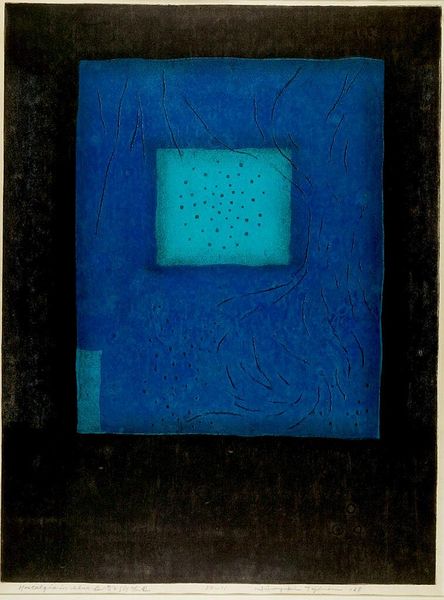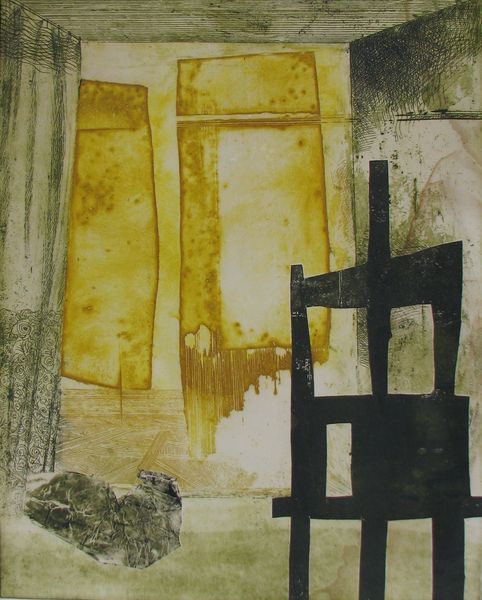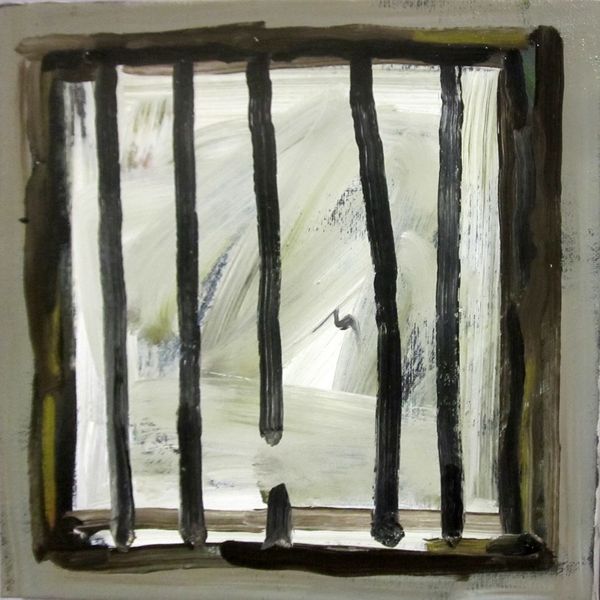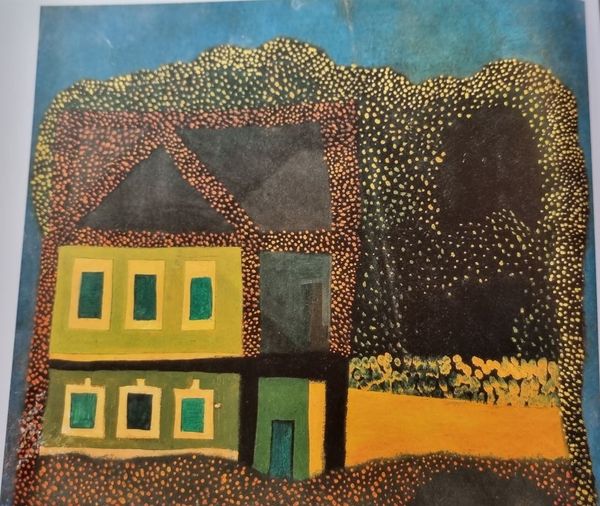
#
toned paper
#
pasteup
#
water colours
#
painted
#
possibly oil pastel
#
tile art
#
underpainting
#
painting painterly
#
watercolour bleed
#
watercolor
Copyright: Public domain
Editor: This piece, titled "Ablak," which means "Window" in Hungarian, is by Vajda Lajos. The artwork might include watercolor and possibly oil pastel on toned paper, maybe even paste-up techniques. I find its geometric composition quite intriguing, but I’m curious, what story do you think the materials and process tell in this work? Curator: Well, given Lajos’ historical context – grappling with the interwar period in Hungary – I am most intrigued by the choices inherent in his making of art. Toned paper as opposed to canvas? The selection of accessible media such as watercolors, and the possible inclusion of oil pastel implies something about the accessibility of artistic creation for Lajos. The 'Window' suggests the very physical act of seeing, perhaps pointing towards how the working class is seeing their lives. Editor: That's an interesting take! So, you're focusing on how Lajos's material choices democratize the artistic process itself? What do you make of the suggestion of the 'paste-up' aesthetic and how that reflects broader socioeconomic factors during that period? Curator: Precisely. Consider the paste-up. If it is one, that elevates everyday production means over high-art production. It suggests fragmentation, the piecing together of scraps, echoing potential scarcity and resourcefulness amidst social upheaval. What materials *didn't* he choose, and what would that signal to us? Editor: It makes you think about what the work IS by knowing what the work ISN'T... like the absence of luxurious or extravagant materials points us towards a whole new level of artistic intention. The materials are really speaking! Curator: Absolutely! The perceived “bleed” of watercolors further democratizes form and intentionality. I’m grateful to the close reading you’ve performed on materiality to bring this forward in our appreciation of Lajos's artistic agency, and the role of accessibility in a troubled historical period. Editor: Thanks! It really reframed my perspective, making me think about how the artwork IS, as a direct expression of, or a reflection of socio-economic conditions.
Comments
No comments
Be the first to comment and join the conversation on the ultimate creative platform.
